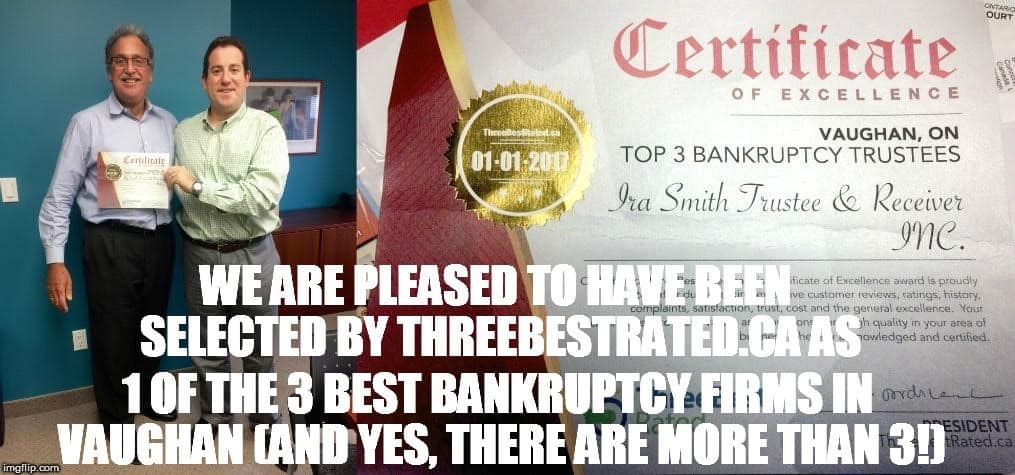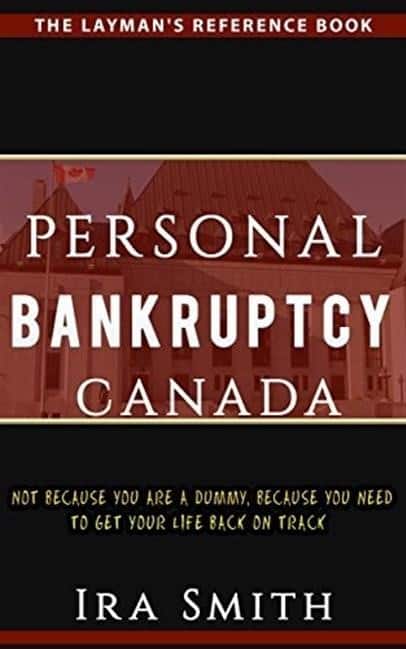
The bankruptcy trustee in Vaughan: Why did we transform into a licensed insolvency trustee?
Similar to caterpillars turning into butterflies, this bankruptcy trustee in Vaughan went through a metamorphosis. The Office of the Superintendent of Bankruptcy officially changed the name “bankruptcy trustee” to “licensed insolvency trustee” (LIT). As of April 1, 2017, all licensed trustees must have fully transitioned to the use of the LIT designation.
Thank you for reading our Brandon's Blog. Check out our AI insolvency bot on this page and don't forget to subscribe!
The purpose of this blog is to offer an overview of the Canadian insolvency process. Think of it as a bankruptcy and insolvency lesson 101.
What is the purpose of the Bankruptcy and Insolvency Act
Among the primary functions of this insolvency process, it is to release the individual from specific financial debts. It is to give a straightforward honest but unfortunate debtor a “new beginning.”. The debtor has no responsibility for discharged financial obligations.
A discharge is available to personal bankrupts, not to corporations. Although a personal case typically causes a discharge of financial debts, the right to a discharge is not absolute. Some sorts of debts may not be released. Section 178(1) of the Bankruptcy and Insolvency Act (Canada) (“BIA”) sets out the types of debts that are not released by the discharge of the bankrupt. The kinds of debts that are not released are:
1. child support and alimony;
2. fraud or near fraud;
3. debts arising from Court orders.
Where can I do some of my research?
You must initially do some of your own research to get an idea of exactly what your choices are. One place to start is our website to learn about:
- Corporate Services
- Creditor Services
- Our Blog titled Brandon’s Blog
Once you have a good handle on what to expect, speak to a LIT to begin discussing what actions you have to take next.

The BIA
The BIA allows for a procedure that permits people and companies to be released from all of their financial debts through either:
- a restructuring (Consumer Proposal, Division I Proposal or the Companies’ Creditors Arrangement Act) under secure arrangements of the federal insolvency statute; or
- through bankruptcy by turning over their property to a licensed insolvency trustee to realize upon it for the general benefit of creditors.
Either way, the funds available for distribution to the creditors are paid out by the licensed insolvency trustee. It is according to the scheme of priority laid out in the BIA.
The Court will consider approving a repayment plan that will repay the approved part of the financial obligations in no more than 5 years. When you use the restructuring provisions of the BIA (Consumer Proposal or Division I Proposal), you need to have a payback strategy to show your creditors just how you are going to pay back your debts. A successful restructuring plan is an alternative to bankruptcy and will allow a person or company to avoid bankruptcy.
There are various rules and ways that must be followed. Your licensed insolvency trustee can go over all the issues with you and is there to aid you through the process.
How does it all work?
Canada’s insolvency legislation is designed for debtors experiencing financial problems who cannot pay their present financial obligations and don’t have enough cash flow to offer a restructuring plan to avoid bankruptcy. The aim is to get a release from their existing debts.
The premise of the BIA is that the individual must deliver all of his or her non-exempt assets to the licensed insolvency trustee. The trustee will sell them for distribution to the creditors. In return, other than for either secured debts or the class of debts not released by a discharge from bankruptcy discussed above, the person’s debts will be erased. The person will be able to maintain any type of property that is categorized as exempt under provincial regulations. In this way, a discharge allows the individual to return to society as discharged bankrupt. This allows the person to start all over again.
Your credit score
Filing in an insolvency process could impact your financial resources and credit score for years. You should very carefully weigh all your options before choosing the bankruptcy option. That is a discussion a licensed insolvency trustee will be happy to have with you and will help you in first trying to find one of the possible bankruptcy alternatives. Hopefully, together you can see which one is best for you. Only if there is not an available alternative, will the trustee recommend bankruptcy?
A current bankruptcy filing may prevent you from acquiring a mortgage or other financing for years. Credit card businesses will instantly end your charge cards when you file for bankruptcy. Likewise, if you are trying to find a job or rent a place to live, some employers or property owners might look unfavourably on a current bankruptcy filing. If other applicants are as qualified as you and don’t have a bankruptcy on their record, you probably won’t be chosen.
Fresh start
Bankruptcy permits people or companies that are unable to pay their debts to settle their monetary difficulties and start restoring their credit. Declaring bankruptcy will trigger the “stay of proceedings”, preventing creditors from starting or continuing any legal action to collect their debts.
A bankruptcy filing will stay on your credit report for about 7 years. Since many financial debts can be discharged in bankruptcy with certain exceptions, people can take certain steps to begin boosting their credit rating after filing for bankruptcy and for sure after obtaining their discharge.
What to do if you are experiencing financial hardship
I hope this bankruptcy trustee in Vaughan Brandon’s Blog was helpful to you. People experience financial hardship for many reasons. If you’re experiencing financial hardship and are looking for a way out, contact Ira Smith Trustee & Receiver Inc. With immediate action and the right plan for moving forward, we can set you on a path to debt-free living Starting Over, Starting Now. All it takes is one phone call.

